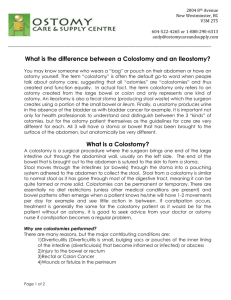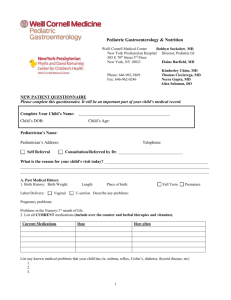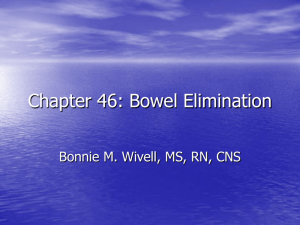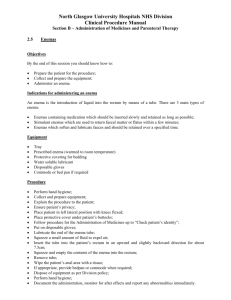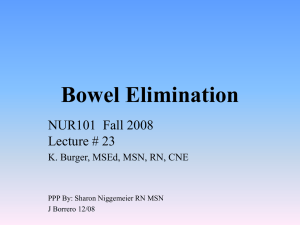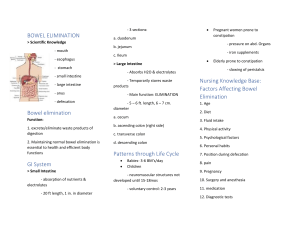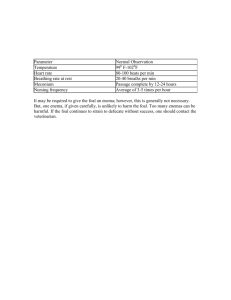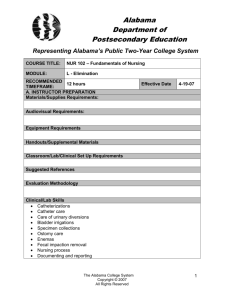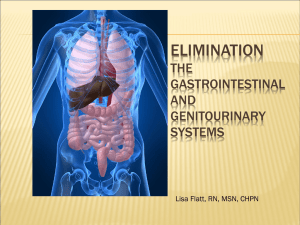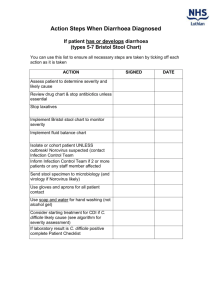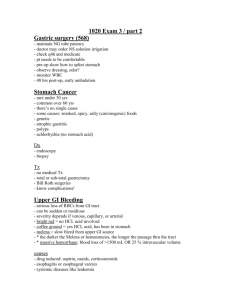Bowel Elimination - Suffolk County Community College
advertisement
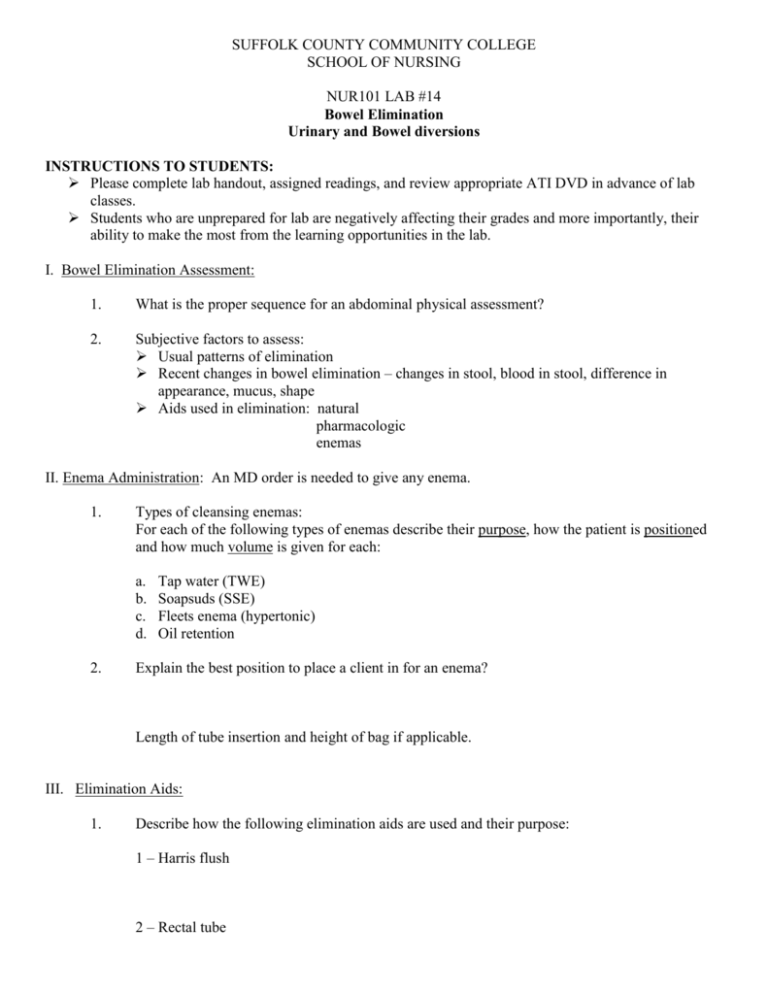
SUFFOLK COUNTY COMMUNITY COLLEGE SCHOOL OF NURSING NUR101 LAB #14 Bowel Elimination Urinary and Bowel diversions INSTRUCTIONS TO STUDENTS: Please complete lab handout, assigned readings, and review appropriate ATI DVD in advance of lab classes. Students who are unprepared for lab are negatively affecting their grades and more importantly, their ability to make the most from the learning opportunities in the lab. I. Bowel Elimination Assessment: 1. What is the proper sequence for an abdominal physical assessment? 2. Subjective factors to assess: Usual patterns of elimination Recent changes in bowel elimination – changes in stool, blood in stool, difference in appearance, mucus, shape Aids used in elimination: natural pharmacologic enemas II. Enema Administration: An MD order is needed to give any enema. 1. Types of cleansing enemas: For each of the following types of enemas describe their purpose, how the patient is positioned and how much volume is given for each: a. b. c. d. 2. Tap water (TWE) Soapsuds (SSE) Fleets enema (hypertonic) Oil retention Explain the best position to place a client in for an enema? Length of tube insertion and height of bag if applicable. III. Elimination Aids: 1. Describe how the following elimination aids are used and their purpose: 1 – Harris flush 2 – Rectal tube NUR101 Lab #14 3 – Disimpaction – Digital removal of stool Critical Thinking: Can the procedure for disimpaction be delegated to assistive personnel? Defend your answer. _____________________________________________________________________________________________________________ _____________________________________________________________________________________________________________ Can enema administration be delegated to assistive personnel? Defend your answer. __________________________________________________________________________________ IV. Stool Specimen Collection: 1. List the steps and equipment you would need for the following: 1- routine stool specimen 2- Fecal occult blood test (FOBT) AKA stool for OB or guaiac test 3- Stool for Ova & Parasites (O&P) V. Bowel Diversions: can be temporary or permanent 1. Types of ostomies: Ileostomy – bypasses entire large intestine Colostomy – bypasses a portion of the large intestine. (loop, end, double barrel) refer to pictures Describe the differences in each type of ostomy listed below and the expected effluent: Ileostomy ___________________________________________________________________________ Transverse (loop) Colostomy ____________________________________________________________ Descending Colostomy (and/or sigmoid)____________________________________________________ 2. Describe assessment of the ostomy: 3. Pouching an Ostomy: 2 NUR101 Lab #14 List the equipment needed for changing a ostomy appliance: Review the procedure for measuring and changing an ostomy appliance. When is an appropriate time to change the colostomy appliance? Documentation: Urinary diversions Urostomy: bladder is removed and ureters are brought to skin surface. Outflow is continuous so the challenge is to keep device secure and skin free from irritation, infection and breakdown. Ileal loop or conduit: portion of ileum (colon) is resected and becomes drainage chamber. Bladder is removed and ureters are attached to resected ileum. Same challenges as urostomy. * can be fashioned into a continent storage pouch. Nephrostomy: tube placed directly into one or both kidneys. REV: rmk 06/10 3
